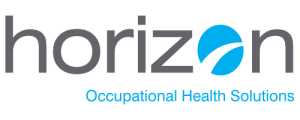
Modern healthcare options have made it easier than ever to keep employees healthy, reduce absenteeism and attract top talent. Designed specifically for safety-sensitive environments, these easy-to-implement programs return immediate benefits.
Here are 4 of the top preventive employee health programs available today:
1. PRE-EMPLOYMENT TESTING
The workplace can pose dangers for people who are not physically or mentally prepared. Pre-employment testing allows employers to screen employees to ensure they’re ready and able to carry out their required duties
• The Benefit: Hiring workers who present a higher risk of onthe- job injury increases absenteeism and the indirect costs associated with it. Pre-employment screening can prevent workplace incidents and accidents before they cause injury or loss of life, or generate excessive costs.
2. WELLNESS SERVICES
People who don’t set aside time for exercise or self-care are sick more often and take more time off work than those who make wellness a priority. In fact, Canadian employees with as few as four lifestyle risk factors (such as obesity, sedentary lifestyle high alcohol intake and smoking) take 50% more time off than their healthier counterparts.
While you can’t mandate your employees to embrace a healthy lifestyle, you can encourage them to pursue healthier choices by incorporating an employee wellness program into your workplace.
• The Benefit: Employee wellness programs offer a multi-pronged approach. These often include nutritional planning, fitness programs and mental and physical risk assessments, which can increase the health of your workforce, decrease the use of sick days and improve employee retention when combined.
3. VIRTUAL HEALTHCARE SERVICES
Booking and attending a doctor’s appointment is time-consuming — especially when working in a remote location. With virtual care, employees can access healthcare professionals quickly and easily from their phone or tablet, at a time that’s convenient for them.
• The Benefit: Virtual care gives employees a quick and simple option to see a doctor for themselves or their child, without requiring time off work. In a recent market survey, 47% of
respondents said virtual care would help them take less time off work. Simplifying access to medical professionals can also facilitate early diagnosis and treatment of health issues before they become severe.
Learn more about the benefits of virtual care for employers, barriers to adoption, return on investment, and more.
4. JOB DEMAND ANALYSIS
A job demand analysis for safety-sensitive roles can protect employees and mitigate risk to organizations. During these analyses, an expert kinesiologist assesses each employee’s workstation design, job design, equipment and tools, manual material handling, environmental factors, work organization, individual factors and more.
• The Benefit: Whether highly physical or rather sedentary, each occupation and role presents specific physical and ergonomic challenges like forceful exertions, awkward or static stances and high rates of repetitive movement, to name a few. A job demand analysis helps prevent occupational injury and musculoskeletal disorders (MSDs), which in turn decreases absenteeism and its related costs to employers.
Creating a positive workplace environment and a solid employee-employer relationship is one of the best ways to ensure the health of your employees and protect your bottom line. Research suggests employees that enjoy a good relationship with their boss and a positive work environment take less time off and are more effective at their jobs.

